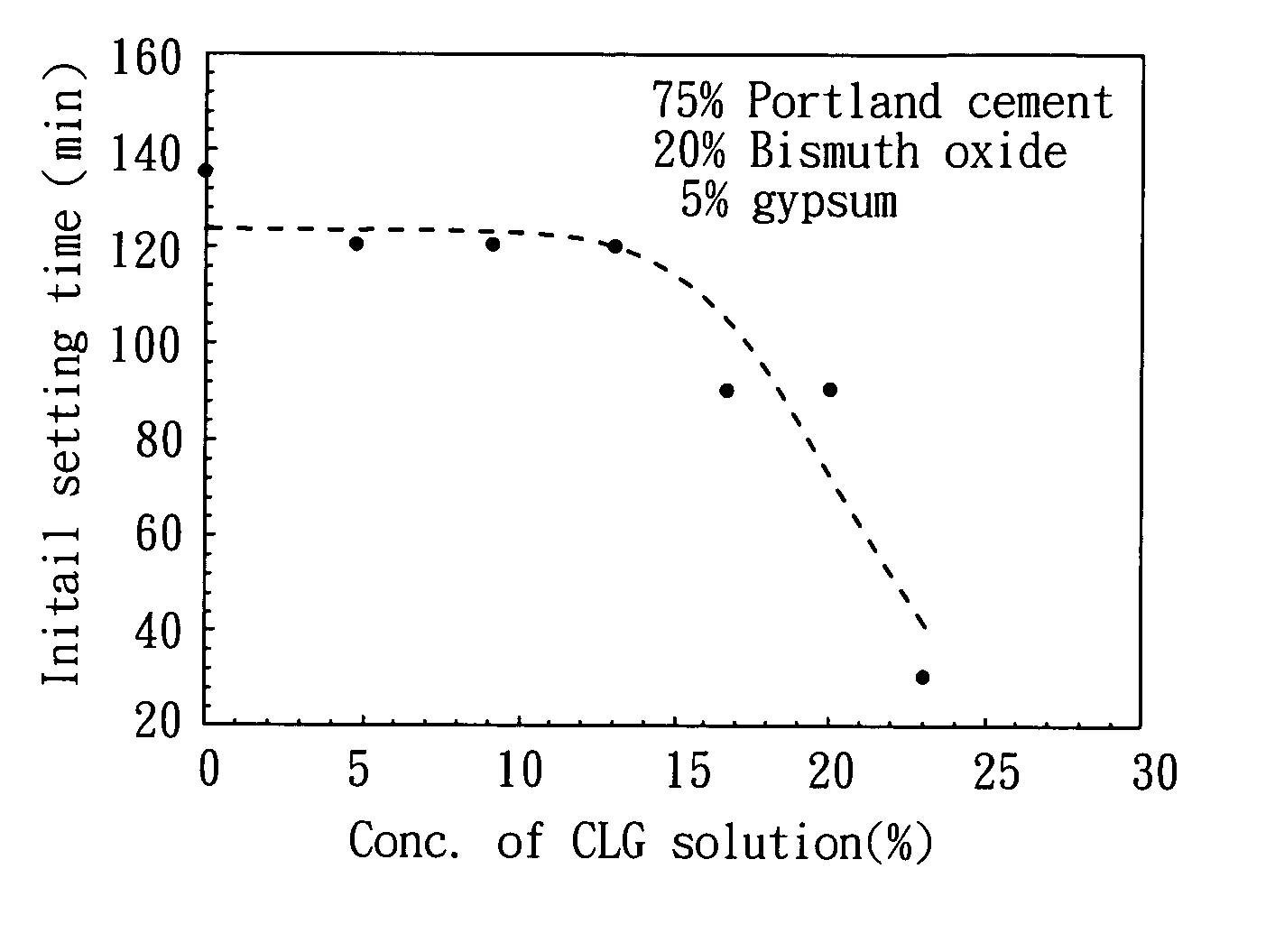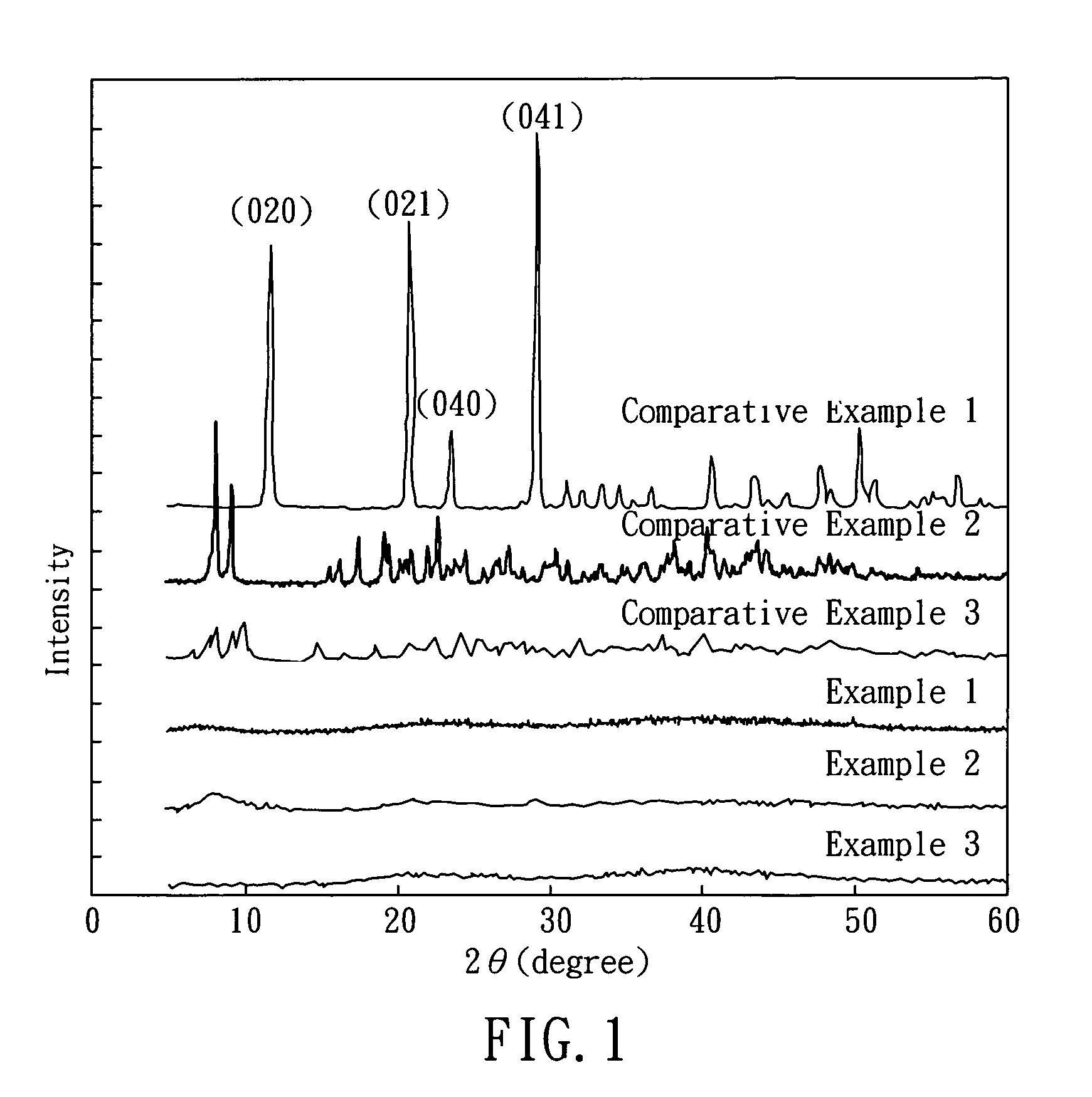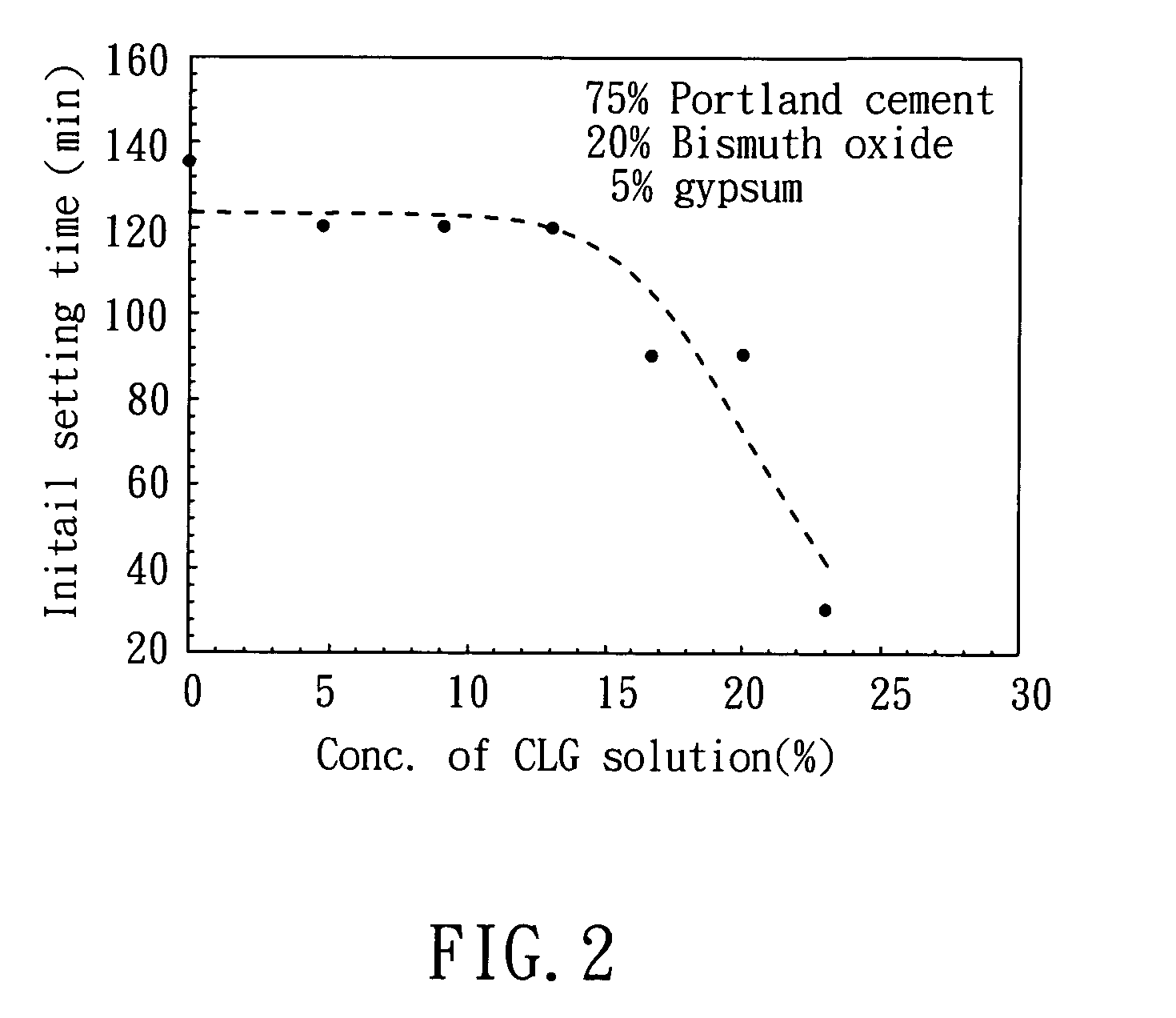Amorphous metal salt for facilitating the handling property of portland cements and dental applications thereof
a technology of amorphous metal salt and portland cement, which is applied in the direction of impression caps, other chemical processes, teeth capping, etc., can solve the problems of portland cement being used in the clinical use and need different from those for the architecture, tooth cavities and root canal fillings are common dental problems, micro-leakage, cytotoxicity, etc., to improve the handling property, reduce the setting time, and improve the effect of aggregation
- Summary
- Abstract
- Description
- Claims
- Application Information
AI Technical Summary
Benefits of technology
Problems solved by technology
Method used
Image
Examples
example 1
Calcium Lactate Gluconate (CLG)
Preparation of CLG
[0048]27.0 g of lactic acid (MW=90.1 g / mol), and 35.6 g of gluconolactone (MW=178.0 g / mol) were added into 100 mL deionized water respectively, followed by mixing to prepare a solution. Then, 14.0 g of CaO (MW=56.1 g / mol) was added into the solution. After mixing and stirring for 1 hour, the solution was filtered, and the filtrate was collected. The filtrate was CLG solution, which has a pH value of 9.8. After drying the filtrate, CLG powder was obtained, which has a water solubility of 35.7˜41.0 g / 100 ml at 25° C.
X-Ray Diffraction (XRD)
[0049]The crystal form of the CLG powder prepared above is determined by wide-angle x-ray diffraction (XRD). First, 1.00 g of CLG powder was placed in a sample carrier, and the powder filling was pressed by a slide. Then, the sample was placed on an X-ray diffractometer (MaxRC, Rigaku, Japan), and X-ray diffraction was performed by using Kα radiation (λ=1.541838A) at scan rate of 10° / min and 20 scannin...
example 2
[0050]2.45 g of sulfuric acid (MW=98.1 g / mol), and 1.80 g of lactic acid (MW=90.1 g / mol) were added into 50 mL deionized water respectively, followed by mixing to prepare a solution. Then, 2.00 g of CaO (MW=56.1 g / mol) was added into the solution. After mixing and stirring for 1 hour, the solution was filtered, and the filtrate was collected. The filtrate was CLS solution, which has a pH value of 9.7. After drying the filtrates, CLS powder was obtained, which has a water solubility of 4.6˜5.0 g / 100 ml at 25° C. The crystal of the product was determined by the same process illustrated in Example 1, and the result shows that the CLS powder has an amorphous structure, as shown in FIG. 1.
example 3
Calcium Sulfate Gluconate (CSG)
[0051]2.45 g of sulfuric acid (MW=98.1 g / mol), and 3.92 g of gluconolactone (MW=178.0 g / mol) were added into 50 mL deionized water respectively, followed by mixing to prepare a solution. Then, 2.00 g of CaO (MW=56.1 g / mol) was added into the solution. After mixing and stirring for 1 hour, the solution was filtered, and the filtrate was collected. The filtrate was CSG solution, which has a pH value of 9.3. After drying the filtrate, CSG powder was obtained, which has a water solubility of 30.1˜31.7 g / 100 ml at 25° C. The crystal of the product was determined by the same process illustrated in Example 1, and the result shows that CSG powder has an amorphous structure, as shown in FIG. 1.
PUM
| Property | Measurement | Unit |
|---|---|---|
| diameters | aaaaa | aaaaa |
| setting time | aaaaa | aaaaa |
| initial setting time | aaaaa | aaaaa |
Abstract
Description
Claims
Application Information
 Login to View More
Login to View More - R&D
- Intellectual Property
- Life Sciences
- Materials
- Tech Scout
- Unparalleled Data Quality
- Higher Quality Content
- 60% Fewer Hallucinations
Browse by: Latest US Patents, China's latest patents, Technical Efficacy Thesaurus, Application Domain, Technology Topic, Popular Technical Reports.
© 2025 PatSnap. All rights reserved.Legal|Privacy policy|Modern Slavery Act Transparency Statement|Sitemap|About US| Contact US: help@patsnap.com



